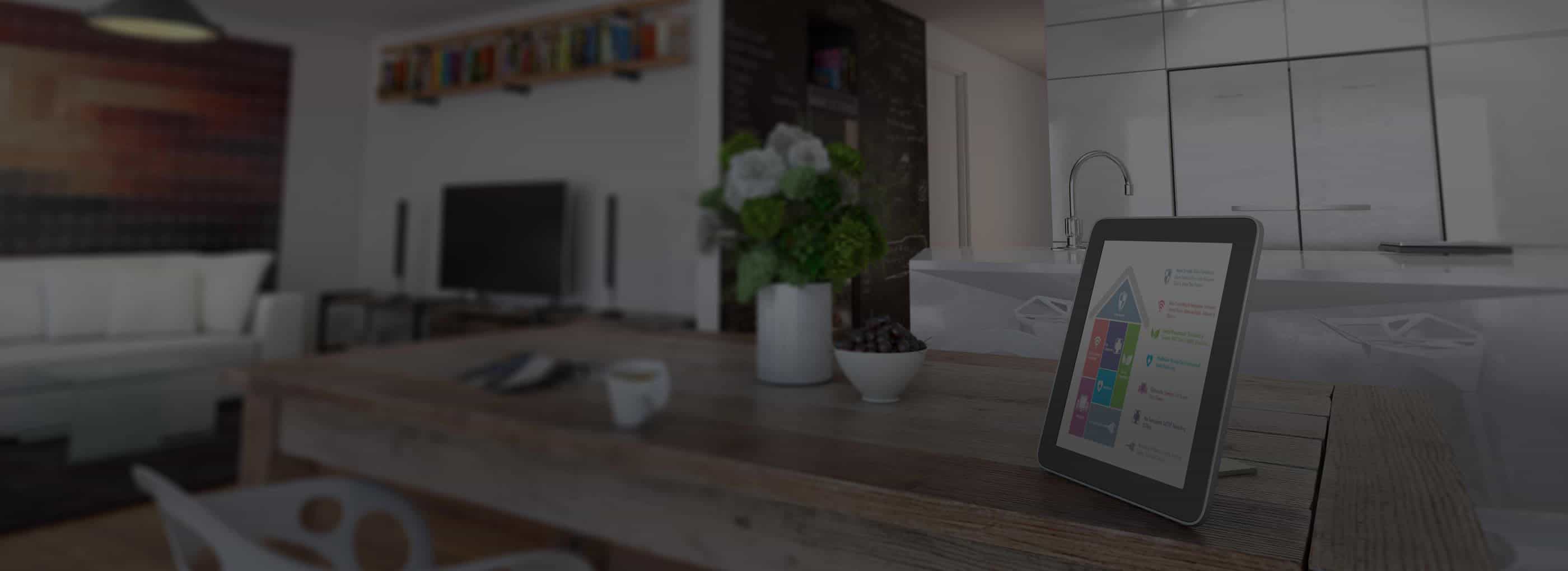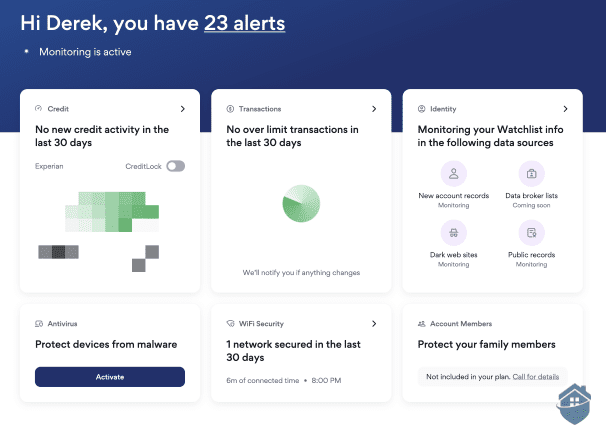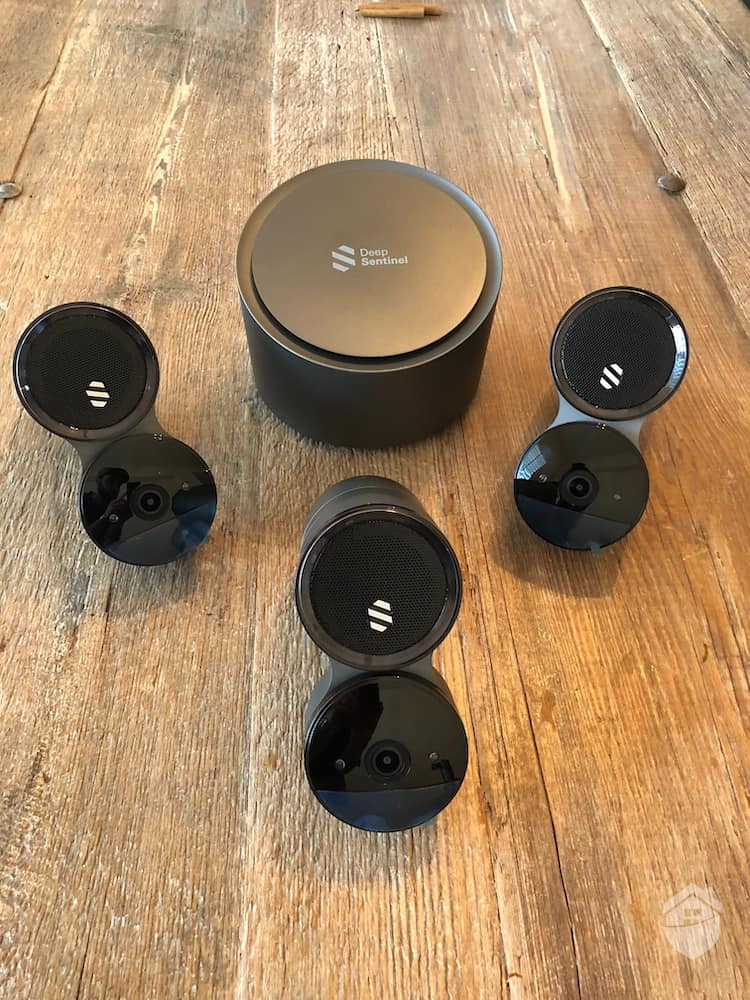Tiny homes present unique security challenges with different priorities than traditional homes. When looking at tiny homes, we found that limited space, mobile lifestyles, and alternative power sources are the biggest considerations.
Thankfully, security systems are available for tiny homes that take these considerations into account. These systems include solar- and battery-powered cameras and wireless home security sensors and hubs. Keep reading to learn exactly how to set up a security system for your tiny abode.
From our Research: Estimates say there are about 10,000 tiny homes in the United States. This is a relatively small number, but in a 2020 survey, more than half of Americans said they would consider living in a tiny home for its affordability and efficiency.1
Understanding Security Challenges of Small Homes
Let’s start by going over the specific security challenges tiny homes face, and then we’ll discuss how you can overcome them.
Space and Installation Limitations
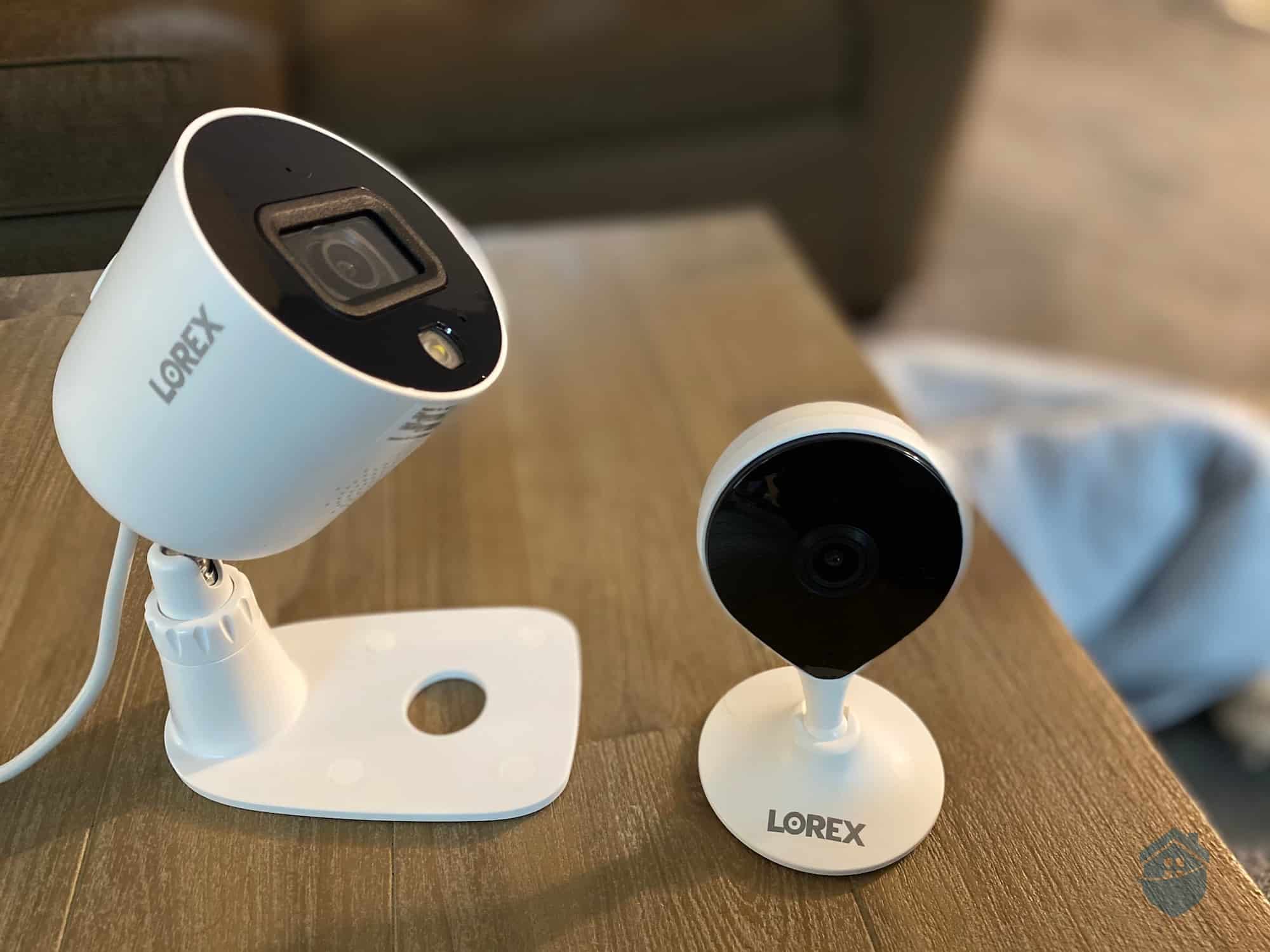
The standalone Lorex Smart Wi-Fi Security Camera (right) is small enough to fit in any tiny home.
Tiny homes operate under strict space limitations. This can really impact your security setup. Traditional security panels, multiple sensors, and extensive wiring simply don’t fit the compact architecture of most tiny homes.
Wall space is also premium real estate in tiny homes, often dedicated to storage or multi-functional furniture. So while traditional security systems typically use wall-mounted equipment, a security system for tiny homes must seamlessly integrate without compromising the home’s functionality or aesthetics.
Pro Tip: If possible, mount security devices on the interior side of loft areas or underneath stairs to maximize protection while preserving valuable wall space.
Power and Connectivity Issues
Many tiny-home dwellers live off-grid. They rely on solar power, battery systems, or limited electrical capacity. Security systems that continuously draw power can strain these resources; but of course, security systems must run 24/7 for continuous connection.
Our testing revealed that security systems drawing more than 20 watts continuously tend to start causing issues with off-the-grid tiny homes. If your tiny home is connected to the grid, this becomes less of an issue.
Internet connectivity presents another challenge. Mobile tiny homes frequently move between areas with varying cellular coverage and Wi-Fi availability. Security systems, however, need reliable communication to send alerts, stream video feeds, and save event recordings.
>> Related Reading: Do Wireless Security Systems Work Offline?
Mobility Considerations
For mobile tiny homes, security systems must withstand road vibrations, temperature fluctuations, and frequent setup/breakdown cycles. Traditional hardwired systems often fail under these conditions. So we recommend a top wireless home security system instead.
Storage during travel is also critical. Security cameras and sensors need protection from road debris and weather while maintaining functionality upon arrival at new locations.
Essential Security Components for Tiny Homes
Based on those unique challenges, we found that there are security components that should be prioritized. There are also a few features you should look for to minimize the power consumption and aid in the mobility of your equipment. Here are our recommendations.
Smart Door Locks
Smart locks serve as the primary entry point security for tiny homes. Our testing identified battery-powered deadbolts with backup physical keys as the most reliable option for tiny home applications.
When choosing a high-quality smart lock, we recommend prioritizing the following features:
- Battery life exceeding 12 months
- Multiple access methods (keypad, smartphone app, physical key)
- Weather resistance rated IP65 or higher
- Integration with popular smart home platforms
After testing nine different smart locks, we found that August and Yale make solid smart locks for tiny homes. They work in a wide range of temperatures, and both providers offer battery-powered options.
Window and Door Sensors
Magnetic door and window sensors provide perimeter security without complex wiring. They run on batteries, and they are easy to stick onto door and window surfaces. They are also easy to take down when needed; just keep a roll of strong double-sided tape handy for reinstallation.
Quality door sensors for tiny homes should feature:
- Wireless range of at least 300 feet from the hub
- Battery life exceeding two years
- Tamper detection capabilities
- Integration with central monitoring systems
All of our top-rated security systems offer window and door sensors that fit these criteria. Although, for tiny homes, we’re fond of Ring Alarm and SimpliSafe as they both offer exceptionally easy DIY installations. Check out our Ring Alarm review and SimpliSafe review to learn more about these two providers.
Security Cameras
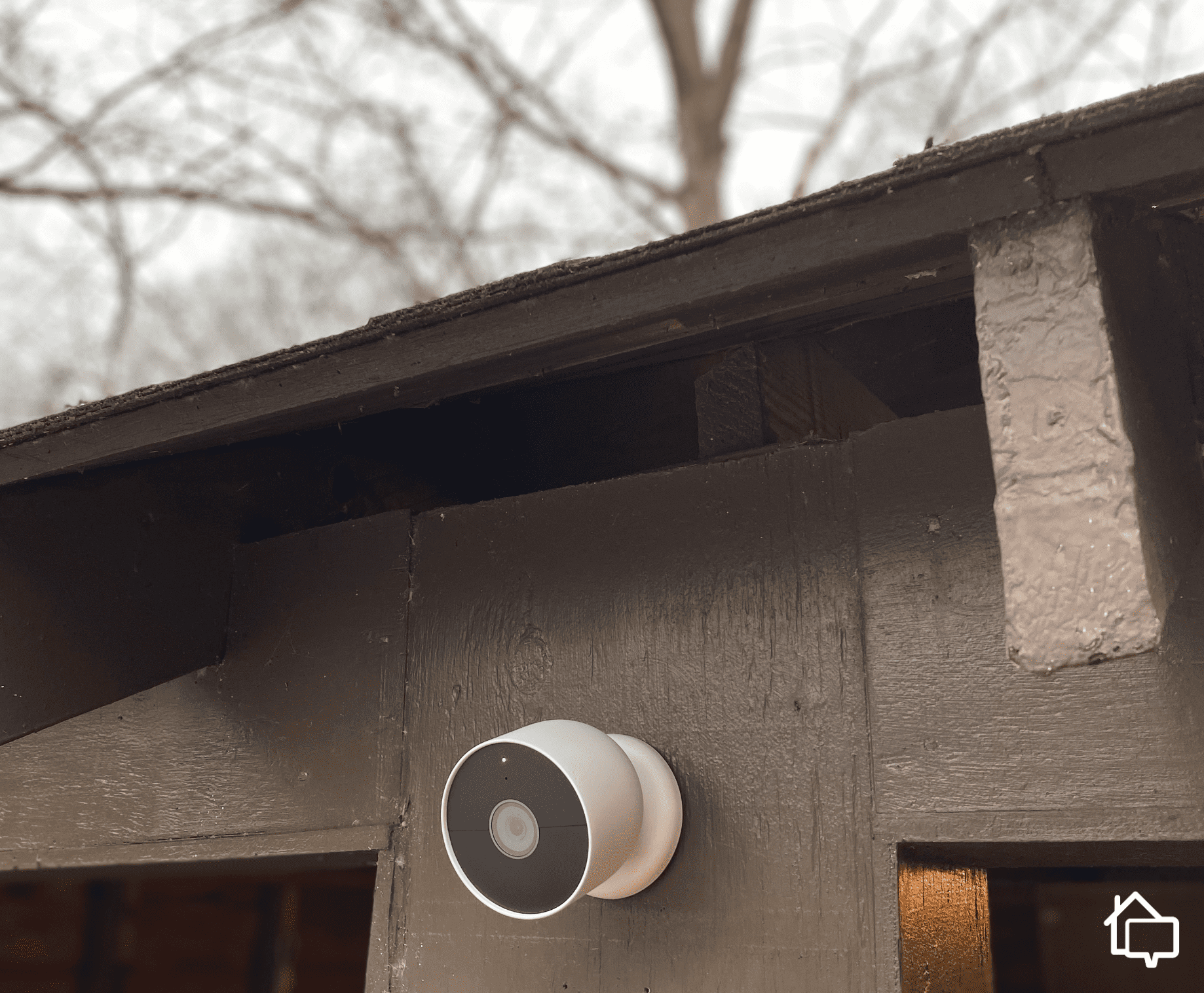
We positioned our Google Nest Cam (outdoor or indoor, battery) so it could see our entire entryway.
Camera placement in tiny homes requires strategic thinking due to limited mounting options and privacy concerns in compact spaces. We suggest that you focus your outdoor cameras on entry points and valuable exterior equipment like solar panels or generators.
When choosing security cameras for your tiny home, we recommend looking for options with the following specifications:
- 1080p minimum resolution
- Night vision capability
- Local storage option (SD card or local hub)
- Weather resistance (IP66 or higher for outdoor units)
- Low power consumption (under 5 watts)
SimpliSafe is a great option if you want cameras that integrate with a security system (including entry sensors). Their indoor and outdoor cameras run on battery. However, their cameras are internet-dependent. They can only use cloud servers for video storage. For a true local option, Lorex is our best pick. Their wireless, battery-powered cameras connect to a DVR for local video storage.
>> Read More: Our Lorex Hands-On Review
Motion Sensors
If you plan to use motion sensors for your tiny home, finding the balance between security coverage and preventing false alarms is crucial. The compact space means motion sensors can easily trigger from normal daily activities, requiring careful placement and sensitivity adjustment.
We found that motion sensors are best positioned to cover entry points of tiny homes. These sensors detect heat signatures, so avoiding areas with heating vents, windows, or pet activity is also recommended.
If you can, find dual-technology sensors that combine passive infrared with microwave detection to provide more accurate motion detection in small spaces.
Expert Recommendation: Install motion sensors in corners at seven to eight foot heights to maximize coverage while minimizing false alarms from pets or air circulation.
Power-Efficient Security Solutions
If your tiny home is off the grid, finding sustainable, power-efficient security solutions is another big challenge. About half of the tiny homes we assessed were off-the-grid, and here are the recommendations we came up with for them.
Solar- and Battery-Powered Options
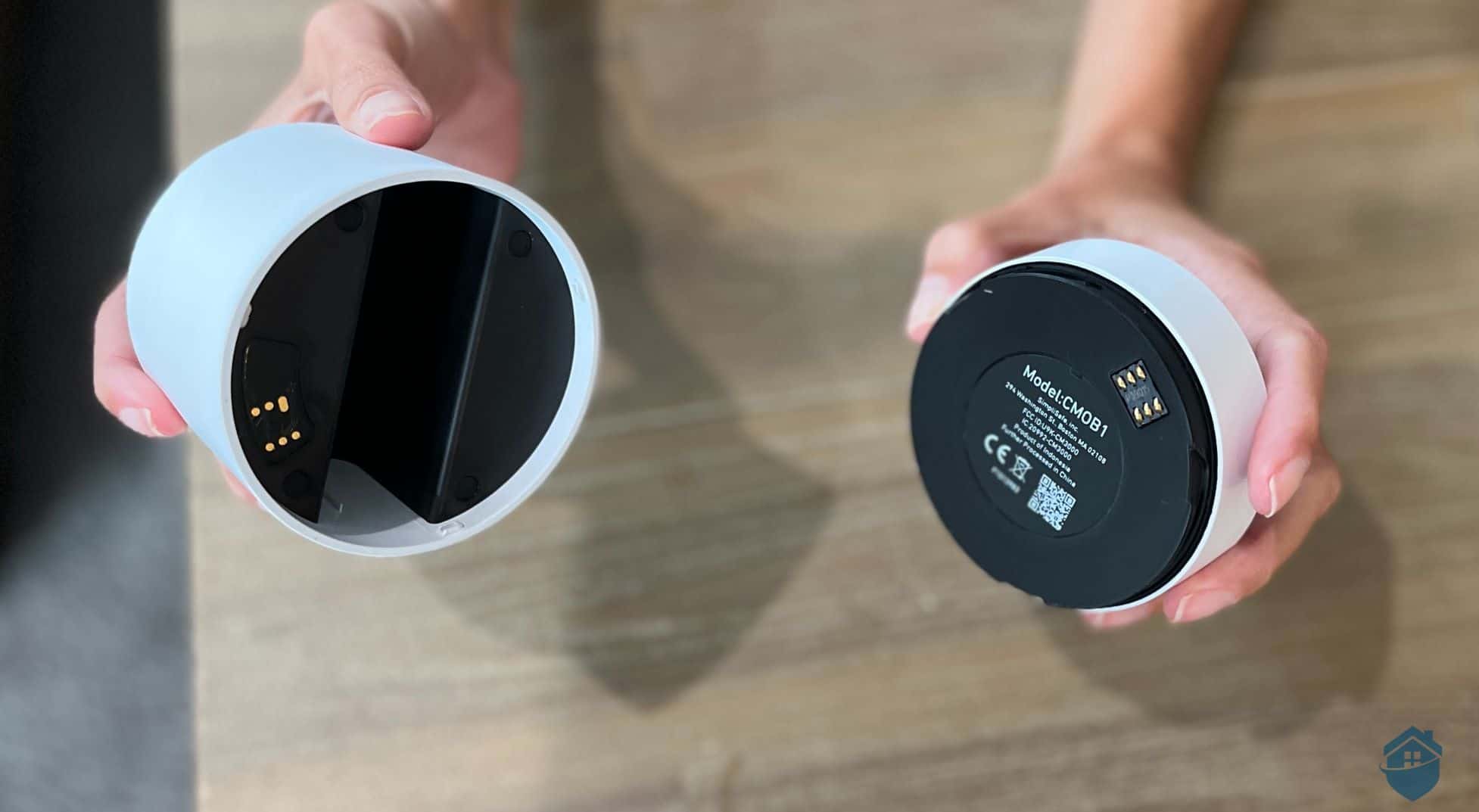
We were able to easily remove the battery in our SimpliSafe Outdoor Camera for charging.
Solar-powered security devices align perfectly with off-grid tiny home lifestyles. They reduce power consumption while maintaining reliable operation in remote locations.
Solar security cameras with integrated panels can operate independently of the main house power system. We recommend going with battery-powered cameras that offer solar charging as an option. When fully charged, these cameras can last anywhere from three to six months, depending on use. After testing Arlo and Ring’s wire-free security cameras, we found that they offer some of the best battery-powered security cameras.
>> Learn About: Ring Home Security Camera Review 2025
Low-Power Monitoring Hubs
In a traditional security system, central monitoring hubs connect security devices (sensors, cameras, etc.) with a monitoring center or smartphone app to deliver timely alerts. Wireless range shouldn’t be a problem. Most of these hubs have a range of more than 300 feet. However, since these hubs need to run constantly, you must choose a power-efficient option with battery backup.
SimpliSafe’s base station, for example, uses a 6.5V DC adapter that draws about 1 to 2 watts of power constantly, occasionally doubling to 3 to 4 watts when the siren is on or when transmitting alert signals. It also has a 24-hour battery backup. It’s a great pick if you want to keep your security system running under 20 watts, especially since SimpliSafe’s sensors also run on replaceable batteries.
Wireless vs. Hardwired Systems
While most tiny homes benefit most from wireless security systems, there are circumstances that can make a hardwired system the better choice.
Advantages of Wireless Systems
Wireless security systems offer significant advantages for tiny home applications, such as:
- Rapid installation and setup
- No structural modifications required
- Easy system expansion
- Reduced vulnerability to wire cutting
- Suitable for mobile applications
When Hardwired Makes Sense
Stationary tiny homes with permanent foundations may benefit from hardwired security components for critical areas. Hardwired systems eliminate battery replacement requirements and provide more reliable power.
Consider hardwired solutions for central alarm panels and primary security cameras that require continuous operation.
Hybrid Approaches
Many tiny homeowners find success with hybrid systems that combine hardwired components with wireless devices for flexible coverage. This approach maximizes reliability while maintaining system adaptability.
Pro Tip: Use hardwired connections for devices requiring continuous power (like video doorbells) and wireless for sensors that only activate during security events.
Remote Monitoring and Alerts
Regardless of which security components you decide to invest in, they should provide you with intrusion alerts at a minimum. We also recommend professional monitoring, but this might not always be possible especially if you’re living a mobile lifestyle. Here are a few considerations regarding monitoring and alerts for tiny homes.
Smartphone Integration
Modern security systems rely heavily on smartphone apps for monitoring and control. Apps should provide real-time alerts, live video streaming, and remote system control. Battery optimization features help prevent security apps from draining phone batteries during extended off-grid periods.
Here are a few security app features we recommend prioritizing:
- Push notifications for security events
- Live and recorded video access
- Remote arm/disarm capabilities
- Battery status monitoring for security devices
- Offline mode functionality
Cellular vs. WiFi Connectivity
Mobile tiny homes require security systems that adapt to changing connectivity options. Cellular backup ensures security monitoring continues when Wi-Fi is unavailable.
Some systems take a cellular-first approach where they always stay connected to a cellular network instead of only when Wi-Fi goes down. That further improves reliability, but as we saw when we tested Frontpoint, it tends to increase monthly fees.
We recommend a hybrid approach either way. If your home has a reliable internet connection (e.g. satellite internet), go with a system that offers cellular backup. If not, take the cellular-first approach.
Professional Monitoring Services
Our favorite security systems with Professional monitoring provide 24/7 security. Services typically cost $20 to $50 monthly and include emergency response coordination. We highly recommend professional monitoring, but again, if you’re frequently moving your tiny home from one place to another, that might not always be possible. Monitoring centers often require homeowners to provide a permanent address so they know where to send emergency responders.
For tiny homeowners with a mobile lifestyle, we recommend a self-monitored security system that allows for no-contract, professional monitoring upgrades. Just remember to update your address with your provider prior to every move.
Budget-Friendly Security Options
A security system doesn’t need to cost an arm and a leg. Here are a few ways to make your tiny home’s security budget-friendly.
DIY Installation Systems
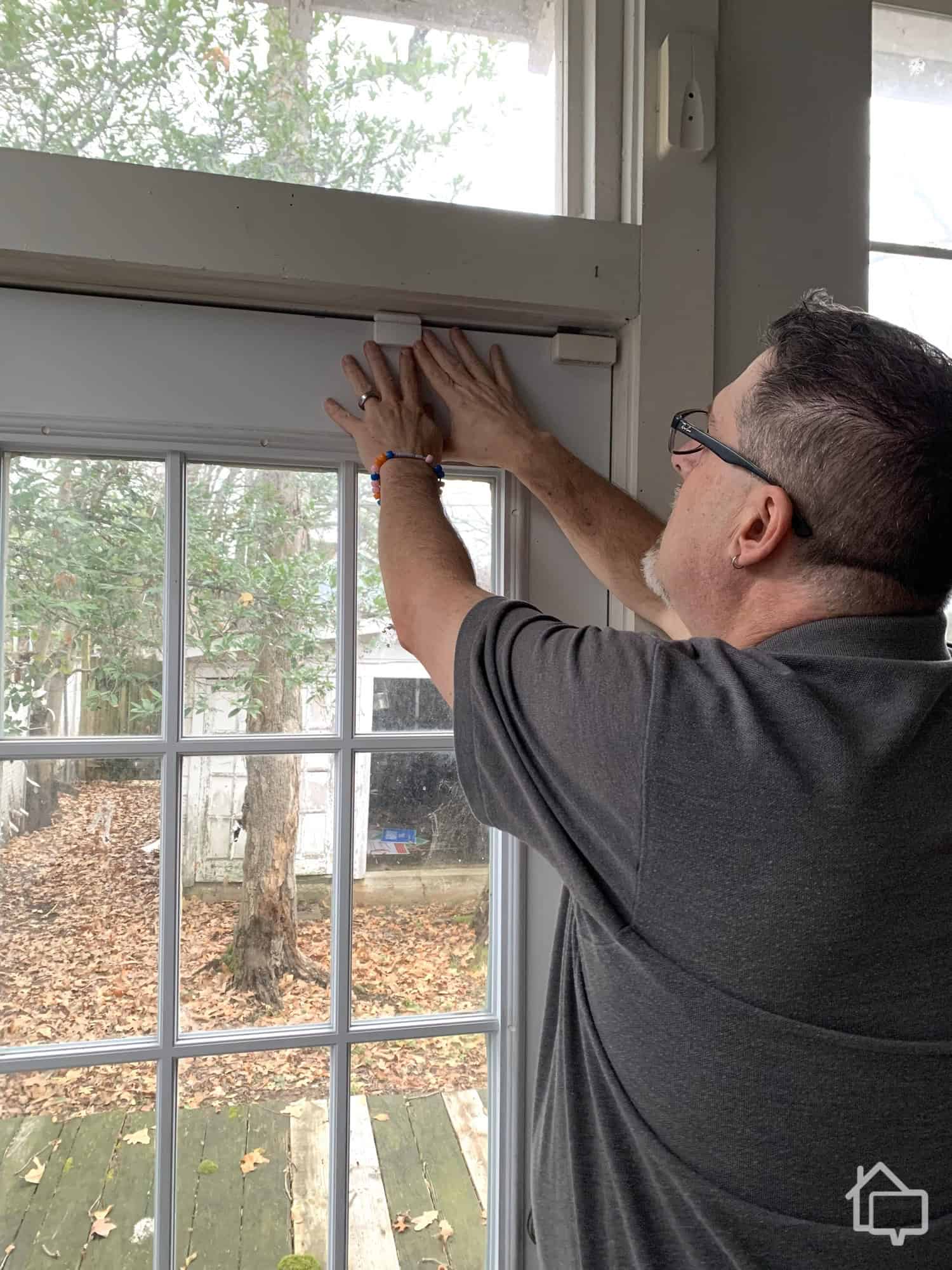
Cove’s window and door sensors are easy to install and only cost $4.50
Self-installed security systems can significantly reduce costs without compromising security. Most modern systems guide you step-by-step through the mobile app and offer phone support for troubleshooting. In our experience, the whole process rarely takes more than an hour.
FYI: Some providers offer free professional installation, like we got when we tested Brinks. However, their equipment costs a lot more than DIY alternatives like SimpliSafe.
Essential vs. Premium Features
Focus security budgets on essential components first: door/window sensors, at least one camera covering the main entry, and a reliable smart lock. Then, you can add more advanced equipment like more cameras and environmental sensors.
Here’s how we recommend prioritizing security equipment as your budget allows:
- Smart lock and basic door/window sensors
- Security camera covering main entrance
- Motion sensor for interior coverage
- Additional cameras for blind spots
- Advanced features like smoke detection
Check out our guide to the most affordable security systems to learn about budget providers that offer basic systems for as low as $100.
Installation and Setup Tips
Now that we covered the key criteria for choosing a security system, let’s go over a few best practices for installing and setting up a security system.
Optimal Sensor Placement
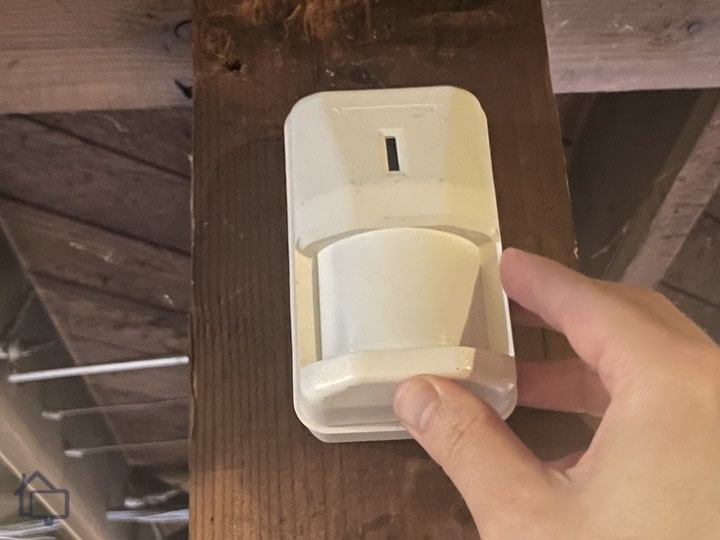
We mounted our ADT motion sensor seven feet high to avoid false alarms from our large dog.
Sensor placement in tiny homes requires careful consideration of traffic patterns, furniture placement, and structural limitations. Door and window sensors should be installed on the opening side of entries within ¼ inch of their magnetic counterparts to ensure reliable operation.
Minimizing False Alarms
Unfortunately, false alarms plague tiny home security systems due to the compact living space and sensitivity to environmental factors. Here are a few tips for minimizing false alarms:
- Position motion sensors away from heating/cooling vents
- Use pet-immune sensors if you have animals
- Adjust sensitivity settings for your specific environment
- Create entry delay zones for main doors
- Regular testing and calibration
Testing and Maintenance
Regular testing ensures security systems function properly when needed. Test all sensors monthly, checking sensor alignment as tiny homes tend to settle and move more than traditional homes which can cause misalignment.
Keep spare batteries for all wireless devices and document sensor locations for troubleshooting. Create a simple maintenance schedule to track testing dates and battery replacements based on manufacturer recommendations.
Advanced Features and Integration
Moving past the basics, here are a few advanced features and integrations you can take advantage of with a security system for your tiny home.
Smart Home Integration
Integration with smart home platforms enhances security system functionality while simplifying control. Popular platforms like Amazon Alexa and Google Assistant support voice control and automation features.
Automated responses can include turning on lights when motion is detected, locking doors at bedtime, or turning on lights when a sensor triggers. These features add convenience while potentially deterring intruders.
Automation and Scheduling
Scheduled automation helps maintain security routines without manual intervention. Systems can automatically arm when you leave (based on smartphone location) and disarm when you return.
For mobile tiny homes, geofencing features can adapt security settings based on location. For instance, we use geofencing to send us a notification if we forget to lock the door after leaving the house in the morning.
Environmental Monitoring
Many security systems now include environmental sensors for smoke, carbon monoxide, water leaks, and temperature monitoring. These features provide additional protection beyond traditional security concerns.
Tiny homes with wood stoves, propane appliances, or limited ventilation particularly benefit from integrated environmental monitoring. Early warning of dangerous conditions can prevent serious damage or injury.
FYI: Security systems that support open smart home protocols like Zigbee or Z-Wave can integrate compatible third-party smart environmental sensors.
Final Thoughts
Effective tiny home security requires balancing comprehensive protection with space constraints, power limitations, and mobility needs. The key lies in selecting components specifically designed for compact, mobile applications while maintaining professional-grade security standards.
Our testing confirms that wireless systems offer the best combination of reliability, flexibility, and ease of installation for most tiny home applications. Focus on essential components first—smart locks, door/window sensors, and strategic camera placement—then expand the system as needs and budget allow.
FAQs
- How much power does a typical tiny home security system use?
Most complete wireless security systems consume 15-25 watts continuously, including hub, sensors, and one camera. This represents about 1-2% of typical tiny home daily power consumption.
- Can I install a security system if I rent my tiny home space?
Yes, wireless security systems do not require permanent modifications and can be easily removed. Check with property owners about camera placement and smart lock installation policies.
- What happens if my internet goes down while I'm traveling?
Quality systems store events locally and upload when connectivity returns. Cellular backup modules (around $10-15 monthly) provide internet redundancy for critical alerts.
- How do I address my mobile tiny home for emergency services?
Use GPS coordinates and landmark descriptions in your security system profile. Many monitoring services can dispatch emergency responders using GPS location data.
- Are security systems effective in tiny homes given the limited entry points?
Yes, the limited entry points actually make tiny homes easier to secure effectively. Comprehensive coverage requires fewer components than traditional homes.
- Can extreme temperatures affect my security system?
Quality systems operate reliably in temperatures from -10°F to 120°F. Battery life may decrease in extreme cold, so monitor device status more frequently during winter travel.

